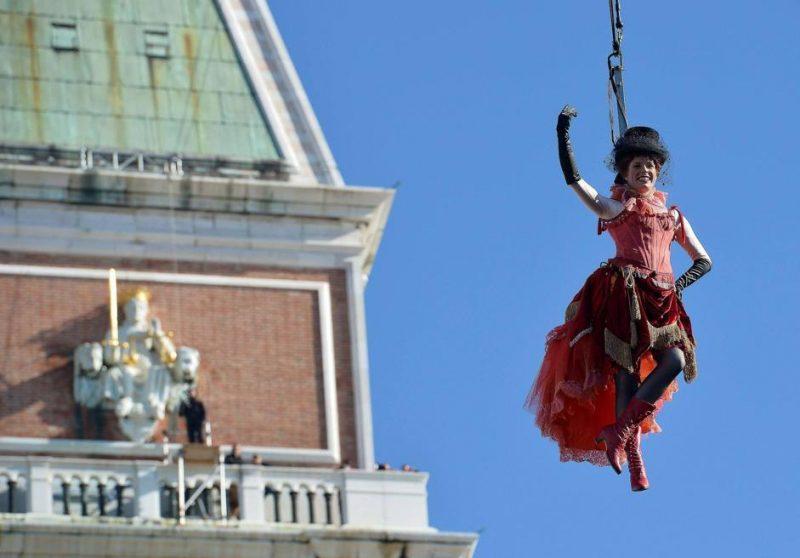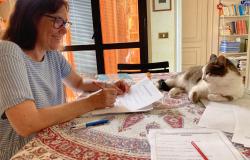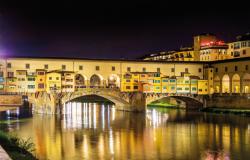The Story Behind Venice Carnival’s Flight of the Angel
ITA:

Use player to listen to Italian version
Every year, the so-called Flight of the Angel marks the official opening of Venice Carnival. The event has its roots in the mid-16th century, when a young Turkish acrobat was able to reach, using only a barbell, the bell tower of San Marco’s Campanile walking on a rope tied to a boat anchored in the pier of the Piazzetta, adjacent to St. Mark’s Square. During the descent, the young acrobat reached the balcony of Palazzo Ducale, to pay homage to the Doge.
Immediately dubbed ‘Svolo del Turco,’ the spectacular feat was repeated every year since then, with variations, usually on Fat Thursday. Initially, it was just professional tightrope performers; later, a few young Venetians decided to take on the challenge.
Eventually, the men were provided with wings and hung to the rope through rings, then pushed down at high speed along the rope; the performance took the name of Flight of the Angel. At the end of the descent in the Palazzo Ducale gallery, the performer received gifts or money from the Doge himself.
In 1759, however, the show ended in tragedy when an acrobat crashed to the ground. Thus, it was decided to substitute people with a large wooden dove that, during the flight, would be scattering flowers and confetti on the crowd below. The event was renamed once again, and it became the Flight of the Colombina (little dove).
Nowadays, the ritual takes place at midday on the first Sunday of the festival, as one of the opening events that officially declares the start of the Carnival. Until 2001, a mechanical bird in the form of a dove descended on the festive crowd. Since 2001, the Flight of the Angel was reinstated. At first, women from the world of entertainment were chosen to descend from the bell tower; since 2011, to perform the flight is the young Venetian woman awarded the title of ‘Mary of the Carnival’ the year before.
Ogni anno, il cosiddetto Volo dell'Angelo segna l'apertura ufficiale del Carnevale di Venezia. L'evento affonda le sue radici nella metà del XVI° secolo, quando un giovane acrobata turco riuscì a raggiungere, usando solo un bilanciere, la cella campanaria del campanile di San Marco camminando su una corda legata ad un'imbarcazione ancorata nel molo della Piazzetta, adiacente a Piazza San Marco. Durante la discesa, il giovane acrobata raggiunse il balcone di Palazzo Ducale, per rendere omaggio al Doge.
Immediatamente ribattezzato ‘Svolo del Turco’, la prodezza fu ripetuta ogni anno da allora, con varianti, in genere il giovedì grasso. Inizialmente, si esibivano funamboli professionisti; poi, decisero di cimentarsi anche alcuni giovani veneziani.
Ad un certo punto, gli uomini furono dotati di ali e appesi alla corda attraverso anelli, poi fatti scendere ad alta velocità lungo la corda; lo spettacolo prese il nome di Volo dell’Angelo. Alla fine della discesa nel loggione di Palazzo Ducale, l'intrattenitore riceveva regali o denaro dal Doge in persona.
Nel 1759, tuttavia, lo spettacolo finì in tragedia quando un acrobata si schiantò al suolo. Così, si decise di sostituire le persone con una grande colomba di legno che, durante il volo, avrebbe sparso fiori e coriandoli sulla folla sottostante. L'evento fu rinominato ancora una volta e divenne il Volo della Colombina.
Al giorno d'oggi, il rituale si svolge a mezzogiorno della prima domenica del Carnevale, ed è uno degli eventi di apertura che dichiara ufficialmente l'inizio del Carnevale. Fino al 2001, un uccello meccanico a forma di colomba scendeva sulla folla festante. Dal 2001, il Volo dell'Angelo è stato ripristinato. All'inizio, furono scelte donne dal mondo dello spettacolo; dal 2011, ad eseguire il volo è la giovane donna veneziana vincitrice del titolo di ‘Maria del Carnevale’ l'anno precedente.











